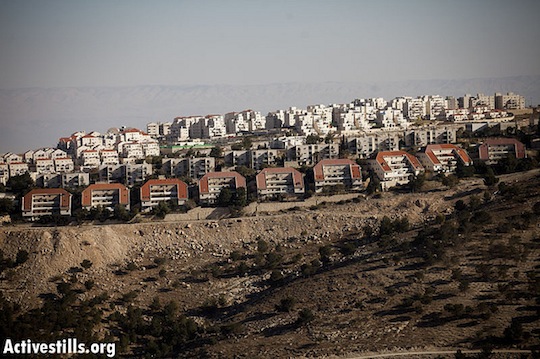A recent op-ed by a former cabinet member shines light on the right wing’s approach to the West Bank, or what it calls the ‘formative territory’ of the Land of Israel. However, according to the right’s logic, Israel doesn’t have a right to a good chunk of the land currently under its control. Lorenzo Kamel unpacks the contradictions.
By Lorenzo Kamel
In a recent article published on Al-Monitor, Israeli lawyer and former cabinet secretary in Prime Minister Benjamin Netanyahu’s government Zvi Hauser claims that the “territory intended for the Palestinian state was the ‘formative territory’ of the Jewish people, where the Jewish civilization took shape,” and that the “two-state” vision of Palestinian diplomacy consists of a Palestinian national state free of any Jewish presence.
This opinion reasserts the position included in a working paper published on the Israeli Foreign Ministry’s website, which claims that Palestinians “are demanding that every Jew leave the West Bank, a form of ethnic cleansing. By contrast, within Israel, Arabs and Jews live side-by-side.” In order to further strengthen this position, it is often claimed that “Judea and Samaria,” as Netanyahu once remarked, “cannot be Judenrein” and that the Palestinian Authority, following a pre-1967 Jordanian policy, has a law banning the sale of property to Jews.
The Jordanian law banned land sales to Israeli citizens, not to Jews. The law was passed in 1973, when Israel and Jordan were still technically in a state of war. Although morally objectionable, it is hardly surprising that a state is committed to ban land transfers to citizens of an enemy country in wartime.
Many intellectuals and Palestinian leaders in the West Bank have clarified on several occasions that any Jew who wants to live in their community must be free to do so. To this, Nazmi Jubeh, an internationally-renowned Palestinian archaeologist, added, “when Israel was created, the Palestinians were already here and accounted for the vast majority of the local population. This is why there are now over one million Palestinians in Israel. In contrast, Israeli settlers arrived in the Palestinian territories through violence and incentives received in recent years from Israeli governments. Equating the former to the latter is not only simplistic, but also morally reprehensible.”
If settlers should be entitled to see their actions justified ipso facto because the “territory intended for the Palestinian state was the ‘formative territory’ of the Jewish people,” then the same consistent approach must be applied to the entire history of the region.
Using the “formative territory” logic consistently would mean that Israel should give up the coast between Ashdod and Ashkelon, which was never a part of the ancient Israelite kingdoms. The numerous archaeological expeditions carried out over decades in Ashkelon – one of five ancient Philistine cities that today encompasses what was, until 1948, the Palestinian village of al-Majdal – have shown that it was never conquered by the ancient Israelites. And even if one assumes that there was a conquest, the occupation of an area for a few years does not mean that it represented part of the a “formative territory.” Otherwise, the many Philistine raids and occupations of Israelite towns as far east as the Jordan Valley would also make these areas “less” Israelite.
The same logic must apply to international consensus. A good example is provided by the Palestinian village of Umm Rashrash, present-day Eilat. It was taken by the Negev and Golani Brigades on March 10, 1949, eight months after the United Nations Security Council’s resolution No. 54 called for a ceasefire, forbidding any acquisition of territory from that date on.
It is only thanks to an established international consensus – expressed by 160 countries – that Eilat is today legitimately part of the State of Israel. The same international consensus that established the illegality of settlements. It is not possible to invoke international consensus over Eilat (and other areas), while disregarding it for the West Bank and East Jerusalem. The tendency to overlook the selective use of the “formative territory” logic and international consensus, while reducing every discussion to security, doesn’t fully take into account the complexity of the issue.
This is even more so the case when considering the fact that Israel’s admission to the United Nations was not unconditional, but bound to its compliance with its assurances regarding the implementation of the UN’s Charter and other resolutions (Israel’s original application for admission was, not by chance, rejected by the UNSC).
Furthermore, before the establishment of the UN, the right granted to the Jewish people to settle in the mandated territories was neither exclusive nor unlimited, but explicitly subordinated to the protection of the “rights and position of other sections of the population.” Those very same rights are currently being violated by the continuous funding allotted to new settlements and through the exploitation of local natural resources, a policy specifically prohibited by the Fourth Hague Convention of 1907.
Although Israel/Palestine has two peoples with two different deeply rooted rights, there is only one international consensus. Peace starts from there.
Lorenzo Kamel is an historian at Bologna University.
Read more:
Housing Ministry publishes massive settlement plan, Netanyahu orders review
Israeli exceptionalism at the United Nations

